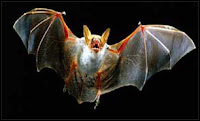* Runners: Individuals exposed to the ash who died become runners, zombies capable of nearly normal human speed. Between 20-30% of the earth's population died and became runners after the Yellowstone explosion. At the low estimate, that places the number of runners at 1,375,680,000 world-wide. The consumption of meat heals a Runner's damaged flesh and prevents decay. Acute sense of smell.
 * Shamblers: Anyone bitten by a Runner or another Shambler becomes a Shambler. The infection can also occur if a Runner's or Shambler's fluids enter a human's bloodstream. The term also applies to a Runner whose body is too damaged to run.The consumption of meat does not seem to affect a Shambler's physical state except to prevent further decay.
* Shamblers: Anyone bitten by a Runner or another Shambler becomes a Shambler. The infection can also occur if a Runner's or Shambler's fluids enter a human's bloodstream. The term also applies to a Runner whose body is too damaged to run.The consumption of meat does not seem to affect a Shambler's physical state except to prevent further decay.  * General Traits: Both types of zombies are dead, functioning without oxygen or damaged organs. Their body temperatures shift to the environment and cold weather seems to make them a bit more lethargic. Active both during the night and day. They display only primitive intelligence, unable to preform simple tasks such as turning door knobs or using basic tools. Shamblers tend to gather in large groups and will follow any Runners, though no form of communication seems to be in place. Both are attracted to sounds, scents and movements. Damage to the brain is the only method to destroy either type.Consumption of living tissue heals damage to Runners and prevent decay in both zombie types.
* General Traits: Both types of zombies are dead, functioning without oxygen or damaged organs. Their body temperatures shift to the environment and cold weather seems to make them a bit more lethargic. Active both during the night and day. They display only primitive intelligence, unable to preform simple tasks such as turning door knobs or using basic tools. Shamblers tend to gather in large groups and will follow any Runners, though no form of communication seems to be in place. Both are attracted to sounds, scents and movements. Damage to the brain is the only method to destroy either type.Consumption of living tissue heals damage to Runners and prevent decay in both zombie types.* Appearance: Bluish-gray skin tones. Pronounced black veins. Milky-white eyes. Level of decay various based on consumption of living tissue. Shamblers walk slowly in a drunken, uncoordinated manner. Runners move with nearly normal human agility.
* Infection Onset: Five minutes after time of death. Those who die from something other than a zombie bite or initial exposure to ash return as a Shambler. From time of bite (or introduction of zombie fluids into bloodstream) to death varies by individual's general physical condition but averages 5 to 10 minutes.
Animal Zombies
 The infectious agent found in ash from Yellowstone's eruption mutated and spread to rats who feasted on zombie flesh. During the time covered by Dead of Winter, other small mammals bitten by undead rats have begun to appear. Cats, squirrels and bats join the zombie rats in making survival more difficult.
The infectious agent found in ash from Yellowstone's eruption mutated and spread to rats who feasted on zombie flesh. During the time covered by Dead of Winter, other small mammals bitten by undead rats have begun to appear. Cats, squirrels and bats join the zombie rats in making survival more difficult. Infected animals show the same characteristics of their human zombie counterparts. Milky white eyes, pronounced black blood vessels and a seemingly insatiable desire to eat meat, even among herbivorous. Bats lack the agility and muscle coordination to fly long distances and tend towards gliding between trees and other elevated structures. Rats travel in large packs, scouring the land like army ants while squirrels tend towards smaller groups that burrow and climb trees. All seem to share an aversion to light and fire.
Infected animals show the same characteristics of their human zombie counterparts. Milky white eyes, pronounced black blood vessels and a seemingly insatiable desire to eat meat, even among herbivorous. Bats lack the agility and muscle coordination to fly long distances and tend towards gliding between trees and other elevated structures. Rats travel in large packs, scouring the land like army ants while squirrels tend towards smaller groups that burrow and climb trees. All seem to share an aversion to light and fire.A single bite will cause the zombie condition in an infected human while consumption of an infected animal's flesh brings about a partial change, resulting in partially Infected Humans.
 |
| An Infected Human |
Whether due to dwindling food supplies or pseudo-religious beliefs, a number of survivors have begun eating the meat of human and animal zombies. Rumors of cannibalism have likewise spread. The infectious agent which turns humans into zombies has either taken partial hold on these desperate, wretched souls or mutated into a weaker strain. They retain most of their human intellect but have exaggerated primal behaviors and are prone to violence.
Common traits include a high tolerance to pain, red (bloodshot) eyes and jaundiced skin with frequent sores. They display a sensitivity to light and have difficulty regulating body temperature. Strangely, true zombies seem to ignore these infected humans.


